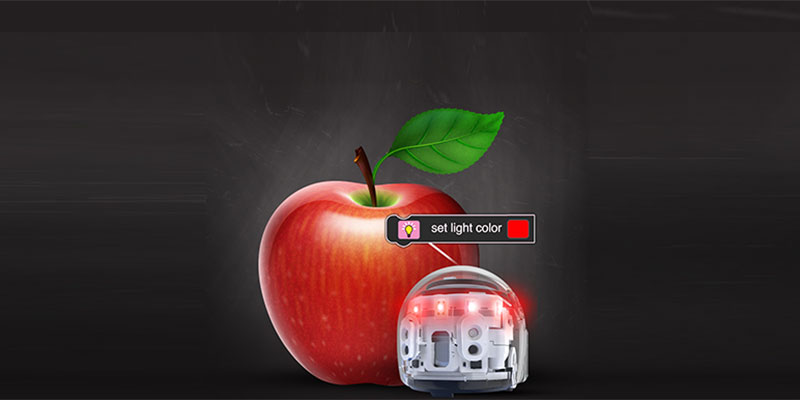Today marks the start of Teacher Appreciation Week, seven days to thank the awesome educators in our lives. At Ozobot, one way we’re saying thank you is with savings on our Classroom Kits. Now through May 11, Evo and Bit Classroom Kits start at just $999 (shop kits here).
Throughout history, many people thanked teachers with a shiny red apple. In the U.S., this tradition stems from the frontier days, when families were often responsible for feeding and housing their childrens’ teachers. Now, the tradition has gone high tech, with teachers crowdsourcing requests for iPads or Evos instead of pieces of produce. Today’s teachers know that tablets and other tech tools make their classrooms more connected and more creative. Here are five specific, STEAM*-savvy educators we’d like to thank!
*STEAM = science, tech, engineering, art, and math
Rene Perry, Early Learning Specialist at Sammamish Children’s School
We’ve all heard that a child’s mind is ripe for learning new languages. We tend to focus on teaching second languages, like Spanish or Chinese, as early as preschool, but there’s another type of language today’s children should learn, no matter what career they set their sights on later: code.
The foundation for knowledge in coding and computer programming can be set as young as preschool, and educators like Rene Perry are finding game-based, screen-free ways to introduce such skills:
“Children learn best through play. Even the youngest learners can grasp key concepts of coding, collaboration and problem solving with Ozobot.”
Thanks Rene!
Stephanie Chambers, Grades 3–5 at Bendwood Elementary
Stephanie Chambers uses technology to bring subjects like math to life for her gifted and talented students. She has also found a way to share her innovative lessons with other educators.
“I started a blog series to showcase a few examples of how to integrate robotics STEM challenges into your classroom.”
We’re loving Stephanie’s blog, The Learning Chambers. Check out one of her lessons here, where she and her students used our robots’ line following feature to better understand angles. Keep the ideas coming, Stephanie!
Emily Tombleson, Science Teacher at Trabuco Hills High
Pop Quiz time!
Q: How can we narrow the gender gap in STEM?
A: With female science teachers, like Emily Tombleson. According to one study, when girls see female role models in STEM fields, it can counteract the pervasive lack of “belongingness” they might otherwise feel.
Tombleson finds really creative ways to teach complex science subjects and engage all types of learners.
“I love to give students problem-solving challenges that enable them to engineer solutions using robotics. Some examples I’ve explored with my students include using robots to model planetary alignment and Kepler’s Law of Periods, movements of underwater trash collection with ocean tides, and simulation of bee pollination.”
Emily, thank you for being a STEAM role model for girls everywhere!
Kyle Kitchen, EdTech and Makerspace Specialist
Kyle Kitchen, like Rene Perry above, specializes in innovative ways to teach even the youngest students to code. In particular, Kyle finds that using visual programming languages, like Blockly and OzoBlockly, work well for younger kids.
“Coding has such a low floor, high ceiling entry point for all our students. It doesn’t matter if you’re beginning your coding journey or have been coding for years, the amount of problem solving, creativity and engagement that my students and myself have when coding with Ozobot is phenomenal.”
Interested educators can browse STEAM lessons on Kyle’s website. Thanks for sharing your ideas Kyle!
Gina Ligouri, English Teacher at Montour High
Gina Ligouri really puts the A in STEAM. We mentioned earlier that code is a language, so it makes perfect sense to us when we see Ozobots put to good use in language arts classes. That said, we’ve never seen something quite so creative as her classrooms’ Murder Mystery Stories project:
“First, students work collaboratively to create a “Murder Mystery” story. After they create a sound plot, students are instructed to build a story board …[then] they Color Code their Ozobot(s) to move on the story board following the actions of the main character. After class presentations, students take part in an informative writing assignment where they give a detailed account of the coding process of the Ozobot throughout their story.”
Learn more about Gina’s teaching style in our March Creator of the Month blog post. Gina, thank you for combining coding and creative writing!









